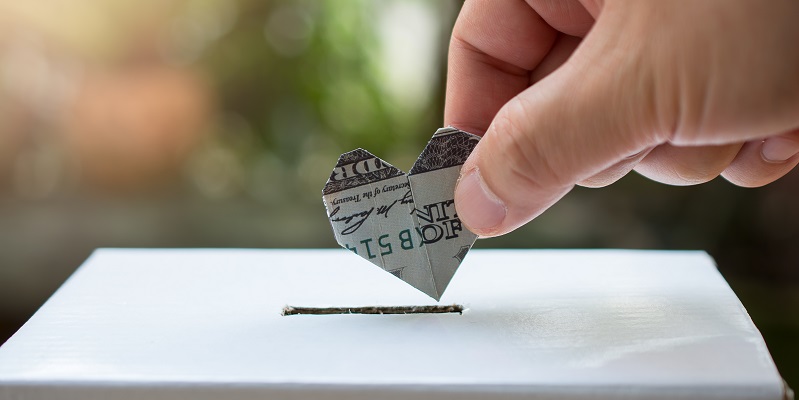Practical Tips to Unlock the Power of Legacy Giving at a Small Shop
Jenny Love
Published: 06/15/2023

Legacy giving programs can be a powerful way for all organizations to secure long-term financial support, but for organizations with limited resources, the task of setting one up can seem too daunting. Lesley Heighway, president and CEO at Peterborough Regional Health Centre Foundation, assures you that it doesn’t have to be.
Lesley set up a legacy giving program on a shoestring 15 years ago that has realized $14 million in gifts in the past decade and secured another $32 million in known expected gifts. Read on for Lesley’s practical steps for small organizations to establish their own legacy giving programs to create a similar revenue stream.
Tips for Finding the Best Legacy Giving Prospects
Though major givers may leave a legacy to your organization, most legacy giving donors are of more modest means.
“What I love is the idea of a retired postal worker who lived a very average life can leave a $50,000 gift to their local hospital. And for that one time in their life, they can feel like a philanthropist and do something really meaningful,” said Fraser Green, chief strategist at Goodworks, and Lesley’s partner in the development of her legacy giving program.
Focus on Direct Mail Donors: Your direct mail donors, even if they have lapsed in recent years, can be excellent prospects for legacy giving. Look at the length of their direct mail donor history and consider those who have been consistent supporters for 10 or more years, even with smaller annual gifts.
Monthly Donors: Your monthly donors are already demonstrating a high level of trust and commitment to your organization and may be receptive to the idea of leaving a legacy gift.
Personal Connection to Your Organization: Community hospitals are often well placed to be recipients of legacy gifts from community members whose children were born at the hospital, or where the hospital took care of a parent or spouse.
Religious Engagement: Individuals who are actively engaged in religious communities, such as through tithing, are more likely to leave a gift in their will.
Volunteers and Board Members: Volunteers, especially board members and committee members, have a deep understanding of and commitment to your organization's mission, which can make them excellent prospects for legacy giving.
Implement Coding for Legacy Giving
Create a coding system in your donor database to track legacy giving prospects and donors. Assign tiers or categories (e.g., PG1, PG2, PG3, PG4) based on their likelihood to leave a legacy gift. This coding system helps prioritize prospects and ensures respectful communication based on their expressed interests.
Use Storytelling
Humans are wired to connect with stories on an emotional level. Focus on telling authentic and relatable stories that resonate with potential donors. By showcasing how your organization positively affects lives and communities, including the lives of the donors themselves, you can inspire others to consider leaving a legacy gift.
If you don’t have a story already, Lesley recommends starting with a board member or even yourself. One good story is enough to last a year or more, and you should adapt the story for every channel you have—email, website, direct mail, social media—piggybacking on existing newsletters and other communication vehicles whenever possible.
Make It Easy
Donors want to hear about the organization's mission and the work they are doing to make a difference, not about tax benefits. Avoid overwhelming potential donors with complex information or technical jargon. Keep the messaging simple and straightforward, emphasizing the impact of their gift rather than the financial details. Provide clear instructions on how to include the organization in a will or estate plan, making the process as hassle-free as possible.
Focus on Mission and Impact
Avoid bombarding them with financial planning materials and instead concentrate on the cause, such as providing healthcare or supporting community well-being. Highlight the organization's commitment to caring for people and the impact their legacy gift will have on furthering this cause.
Ditch the Campaign Mindset
Legacy giving marketing differs from other forms of storytelling and marketing due to its absence of a specific fundraising cycle. Legacy gifts are received based on the donors' timeline, requiring fundraisers to remain top of mind and inspire donors to take action.
“This isn’t your holiday appeal; you won’t get all your gifts in December,” Lesley counsels. “What may send a donor to their lawyer to add a bequest? It could be the birth of a grandchild, the death of a spouse, or divorce. You really have to be present all the time.”
Start Small, Start Now
Implementing a legacy giving program doesn't have to be daunting if you start small and gradually build momentum. Finding and sharing inspiring stories is a powerful way to kick-start the program. Reviewing annual giving lists for repeat givers can help identify potential legacy giving prospects. By starting the conversation and making legacy giving a part of your organization's culture, even small steps can lead to significant long-term results.